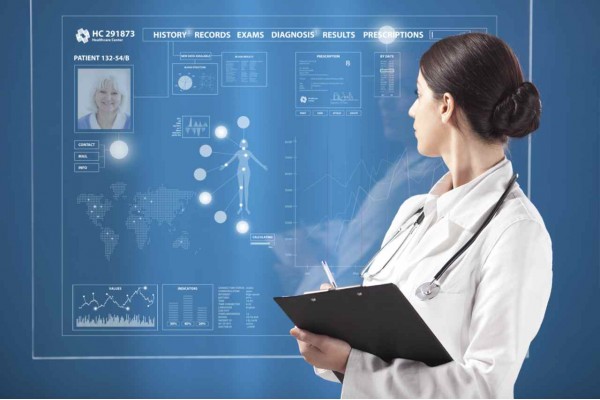Surgery of the future
December 20, 2017
Source: leyton
 885
885

French Surgeon Thomas Grégory undertook an orthopedic surgical operation on a real life human in Avicienne Bobigny’s teaching hospital, near Paris. He had to implant a prosthetic shoulder on an eighty year old patient.
The operation has been done with the help of a new piece of equipment, which is most commonly known for either gaming, or for industrial purposes: the Microsoft augmented reality glass – Hololens.
First of all, a 3D model of the patient was been created before surgery, combining images previously acquired via an MRI scanner, or radiography. On the day of the operation, a 3D image was (virtually) projected on the patient, and helped Dr Grégory in any of his movements and decision making.
An additional layer of mixed reality has also been implemented, so that he could consult other sources of medical data (patient’s tissue thickness, exact localisation of hidden organs or veins), medical documents, patient’s dossier, or videos of similar procedures.
With the AR lens, and after a two months training, Doctor Thomas Grégory was able to ‘see through’ the skin and skeleton of the patient, and therefore was able to have the best possible change of finding the right position for the prosthetic, and the best way to go through tissues safely with the instruments.
According to Thomas Grégory, the AR lens is the future of the surgery, as it allows more precise movements, less invasive protocols, and also a lower level of risk of infection. The global operation (including preparation) allows a better analysis before the operation takes place thanks to the 3D models, and then a more efficient surgery. The new AR tool is also great for teaching purposes, as students can see with the exact point of view of the surgeon, and can better prepare for future operations.
The critical steps of the operation was followed from USA, UK, and South Korea by three surgeons thanks to the Skype App. The distant surgeons looked at HoloLens video stream, heard surgeon’s question and gave pieces of advice when needed – just like a conference call.
At the same time as this world first, students all over the world followed via a live stream session on the generalist science French website https://www.sciencesetavenir.fr/.
The next step, maybe in few months, is to get a perfect real time 3D tracking & model remapping solution. Then the tool will be adapted to operate any organ or tissue with the smallest physiological movement.
Waiting these improvements, the surgery of the future is already a reality.
By DduRead more on
- Things to Know before Buying Newborn Baby Incubators March 31, 2022
- Highly Resistant Food Poisoning Bug Responds to Antibiotics September 6, 2018
- Smartphone Based Diagnosis to Identify Mosquitoes Transmitting Infection September 5, 2018
- 3 Natural Plant Extracts Manufacturers on Drugdu.com September 4, 2018
- Shenzhen Chuanggan – Health Assessment Facility Supplier September 4, 2018
your submission has already been received.
OK
Subscribe
Please enter a valid Email address!
Submit
The most relevant industry news & insight will be sent to you every two weeks.



